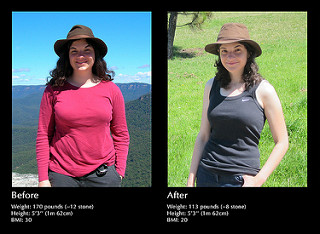The Origins of Comfort Eating and what to do about it
The Origins of Comfort Eating and what to do about it
Often our emotional state is reflected in our eating behaviors. It feels like there is an umbilical cord between how we feel and how we eat. It doesn’t have to be that way. We can learn to sever the umbilical cord between our emotions and what we put into our mouths.
Reaching for food when life is hard is something many of us are familiar with. We were trained to do that.
I see it all the time. A baby is cranky or just noisy (at the store, in a house of worship, at a family gathering, at the doctor’s office, …). Next, the baby is offered something to put into its mouth: a pacifier or a bottle. An older child gets a piece of candy at the bank, the doctor’s office or for good behavior. The opposite is also true: the bribe or withholding trick: if you’re good you’ll get ice cream. Or “no dessert for you, you’ve been bad”. Is it any wonder that when we finally get control over our own food supply, we do what feels emotionally supportive, rather than what we know is healthy for us?
Here are some examples for how it can play out in our lives now.
1. A couple of years ago I reconnected with someone I hadn’t seen in a long time. I know her to be health conscious and fit. As her husband was battling cancer, she gained a lot of weight. She said she was comfort eating. She couldn’t help it.
2. Some years ago I was shocked at my response when my life coach asked me what my definition of SUCCESS was. When I looked deeply inside me, the surprising answer I found was “being able to buy and eat any food I want”. That was the beginning of a profound shift in my relationship with food.
Surprisingly, we don’t just run away from “bad” feelings. We run away from “good” feelings as well. Following is an example.
Story: Anxious about being excited
Recently while at the roller-skating rink I had the chance to observe a family waiting in line. It appeared to me that the mother of three young girls was very uncomfortable with her daughters being excited about going skating. She tried to squash any sign of happiness and excitement with threats like “if you don’t stand still, we’ll just go home” and “you’ll just have to sit in the car while we skate” and “you’re spoiling it for everybody”. Later I saw them again in the snack bar. It hadn’t stopped. “Sit still” and “NO! You can’t have a pretzel”, sounded more like a drill sergeant rebuking a new recruit than a rational conversation.
So, what are these three young girls learning about being excited and having fun? Probably the same thing their mother learned when she was young: “it’s not safe to be excited” and “things calm down when everybody is eating”. So, don’t be surprised if you are stress eating when you are happy or excited.
Call to Action and Why This Matters:
I don’t need to tell you the benefits of a healthy body. I don’t need to tell you about just having more willpower. I don’t need to tell you about one more diet to try, or one more trick to keep you from food you desperately want to eat. If you and food have an adversarial relationship – you have probably tried them all.
Are you ready to change all that? Ready to start to de-link your connection between emotions and food? Like any habit, even those you have had for a long time, reaching for comforting food can be replaced with other behavior.
Start with awareness: how and when do you self soothe with food?
• Do you lose your appetite?
• Do you eat for comfort?
• Do you tend to go for sweet or salty comfort food?
• Do you eat until you go numb or the discomfort from overeating is greater than the uncomfortable feelings you had before?
• When your life feels out of control, do you engage in “control over food behavior” such as anorexia or bulimia?
Take a moment and reflect on today or yesterday while it is fresh in your mind. Did you eat something you wish you hadn’t? How were you feeling afterwards? Did you feel stuffed, disgusted, muted, satisfied, numbed, nauseous, calm? OK. What emotions were you feeling before you started to eat, emotions you were covering up that might have been too uncomfortable to feel? What were you running away from, and running to food to help divert you?
Keep a small notebook of situations and emotions that bring you running to food. Then pick one of them that you think you can shift into a new habit that doesn’t involve food. Don’t try to change chocolate cake to carrot sticks. Remember you still need to be comforted. What are things that are comforting to you? A warm bath? A friendly chat with a trusted friend? Sitting on a sunny bench at a nearby park? Some physical activity, like yoga? Listening to some soothing music? Make a list. Find one or more activities that you will substitute for one specific emotional pattern. Plan ahead what you will do the next time that trigger situation occurs. Congratulate yourself every time you succeed and be gentle with yourself if you slip into old patterns. Just recommit to do better next time. I recommend that you go easy on yourself. Focus on changing one pattern every 3 months.
Taking it Farther:
Start to notice why you respond to certain situations as you do. I’ve heard that 10% is what happens to you and 90% is how you respond to what happens. If a situation is not stressful to you, you won’t need comforting. But that is a topic for another article.
Contact me:
If this was helpful and you want more, I’m here for you. Call to schedule coaching and start living the life you choose. Call Edith at 847.913.3900.
-
4 Things You Can Do Each Day To Help You Lose Weight Naturally
The way in which most of us today live our lives means that because of
-
What is Anorexia?
What is anorexia? You’ve probably heard a lot about it all th
-
Lose the Baby Weight with Healthy Food and Exercise
Lose the Baby Weight with Healthy Food and Exercise
-
The SMART Method Helps You Succeed At Anything!
The focus of this article is goal setting, which is an important p
-
10 Easy Weight Loss Tips for the New Year
The New Year is here. One New Years reso
-
South Beach Diet Information And Recipes
It is a widely held belief that the key to weight loss is finding the
- DON'T MISS
- Perform Exercise in order to lose the Weight: Good for the Health of Teenagers
- Top Advice And Tips For Successful Weight Loss
- How To Avoid Carbohydrate Trigger Foods
- Xenical Used In Weight Loss
- The Confusion That Currently Characterizes Mass Fat Loss And Fitness
- Could A Gluten-Free Diet Be Doing You More Harm Than Good?
- Why Die to Diet?
- How To Stay Away From Obesity With The Right Eating Habits
- How To Lose Fat And Become Healthy Again?
- Losing Weight Naturally – How To Fit In Your Daily Routine…




